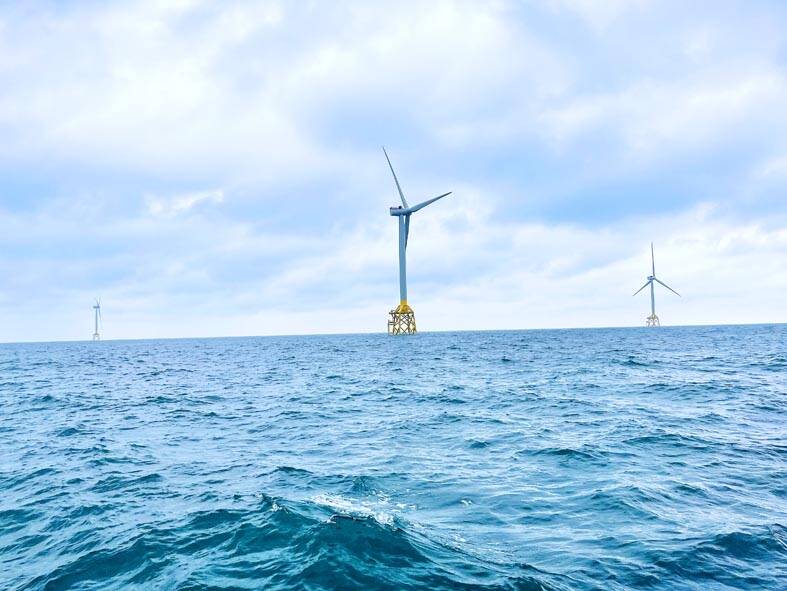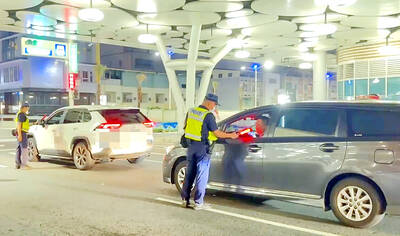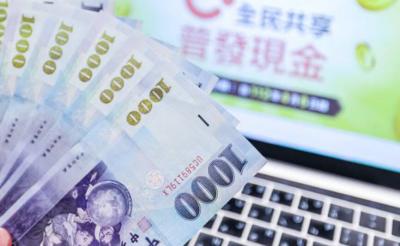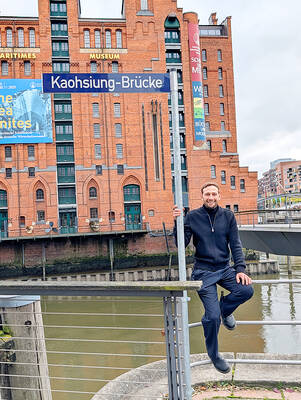People working in industries that would be most negatively impacted by the government’s net zero carbon emissions policy have an insufficient understanding of what the target is and what its effects are likely to be, a survey published on Wednesday showed.
The Survey on Awareness of Just Transition of High-carbon Industries in Taiwan, published for the second year by National Taiwan University’s Risk Society and Policy Research Center, found that 49.8 percent of respondents said they had little understanding of the government’s net zero policies.
Although that figure is still high, it marks a substantial decrease from last year’s 81.2 percent, center director Chou Kuei-tien (周桂田) told a news conference in Taipei to introduce the report’s findings.

Photo: Liao Chia-ning, Taipei Times
The center surveyed 521 employees, managers and executives working in carbon-intensive industries from October to last month.
The survey showed that 46.8 percent of respondents were worried about the burden of decarbonization on them personally, for example, increased costs being passed on, Chou said, adding that the figure was down from 57.7 percent in last year’s survey.
Young and female employees were the most concerned, he said.
The government should enhance community participation to deepen a “just transition consciousness” and build a strong social foundation for when net zero transition policies are implemented, he said.
Most respondents said that funds collected through carbon fees — scheduled to be collected from 2025 — should be used to boost employment by helping small and medium-sized enterprises (SMEs) and workers acquire skills needed for success in low-carbon industries, the survey showed.
It showed that 89.9 percent agreed SMEs should be consulted before net zero policies are implemented, while 77.5 percent said the government, companies and employees should have three-way meetings to develop ways to help manage the fallout from the policies.
Chou said that carbon fees should be made a “carbon tax,” as the former is more restrictive.
Article 33 of the Climate Change Response Act (氣候變遷因應法) says that the fees could be used to “assist the central competent agency to execute a just transition” among a list of 13 purposes.
“A carbon tax, administered by the Ministry of Finance, could potentially have a much wider scope of use, as it would be collected by the central government,” Chou said.
David Walther (王瑞庚), program manager at Academia Sinica’s Center for Sustainability Science, said that communication and assistance need to be in place early and be available to all who would be affected to avoid large protests.
Walther also highlighted the importance of an Executive Yuan-led oversight mechanism, instead of each ministry having to cope with net zero issues alone, “such as the Ministry of Agriculture regarding solar power and the Ministry of the Interior regarding national land.”
Following this logic, the Ministry of Labor and the Ministry of Welfare and Health are yet to be affected by net zero issues and so have not made any moves, he said.
A Cabinet-level directive needs to be issued to coordinate a comprehensive roadmap encompassing every ministry, especially the Ministry of Digital Affairs, which needs to develop “digital sustainability,” he added.
Youth Labor Union 95 director Ray Cheng (鄭中睿) said that the Ministry of Education needs to take a more active role in helping the public prepare for a green transition.
There is a complete lack of human resource planning in the net zero roadmap that the National Development Council released last year, Cheng said.

TRAFFIC SAFETY RULES: A positive result in a drug test would result in a two-year license suspension for the driver and vehicle, and a fine of up to NT$180,000 The Ministry of Transportation and Communications is to authorize police to conduct roadside saliva tests by the end of the year to deter people from driving while under the influence of narcotics, it said yesterday. The ministry last month unveiled a draft of amended regulations governing traffic safety rules and penalties, which included provisions empowering police to conduct mandatory saliva tests on drivers. While currently rules authorize police to use oral fluid testing kits for signs of drug use, they do not establish penalties for noncompliance or operating procedures for officers to follow, the ministry said. The proposed changes to the regulations require

The Executive Yuan yesterday announced that registration for a one-time universal NT$10,000 cash handout to help people in Taiwan survive US tariffs and inflation would start on Nov. 5, with payouts available as early as Nov. 12. Who is eligible for the handout? Registered Taiwanese nationals are eligible, including those born in Taiwan before April 30 next year with a birth certificate. Non-registered nationals with residence permits, foreign permanent residents and foreign spouses of Taiwanese citizens with residence permits also qualify for the handouts. For people who meet the eligibility requirements, but passed away between yesterday and April 30 next year, surviving family members

The German city of Hamburg on Oct. 14 named a bridge “Kaohsiung-Brucke” after the Taiwanese city of Kaohsiung. The footbridge, formerly known as F566, is to the east of the Speicherstadt, the world’s largest warehouse district, and connects the Dar-es-Salaam-Platz to the Brooktorpromenade near the Port of Hamburg on the Elbe River. Timo Fischer, a Free Democratic Party member of the Hamburg-Mitte District Assembly, in May last year proposed the name change with support from members of the Social Democratic Party and the Christian Democratic Union. Kaohsiung and Hamburg in 1999 inked a sister city agreement, but despite more than a quarter-century of

China Airlines Ltd (CAL) yesterday morning joined SkyTeam’s Aviation Challenge for the fourth time, operating a demonstration flight for “net zero carbon emissions” from Taiwan Taoyuan International Airport to Bangkok. The flight used sustainable aviation fuel (SAF) at a ratio of up to 40 percent, the highest proportion CAL has achieved to date, the nation’s largest carrier said. Since April, SAF has become available to Taiwanese international carriers at Taipei International Airport (Songshan airport), Kaohsiung International Airport and Taoyuan airport. In previous challenges, CAL operated “net zero carbon emission flights” to Singapore and Japan. At a ceremony at Taoyuan airport, China Airlines chief sustainability